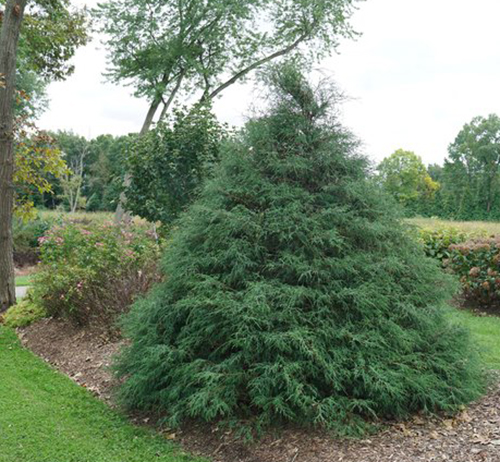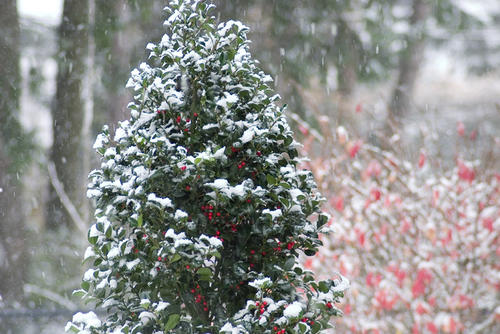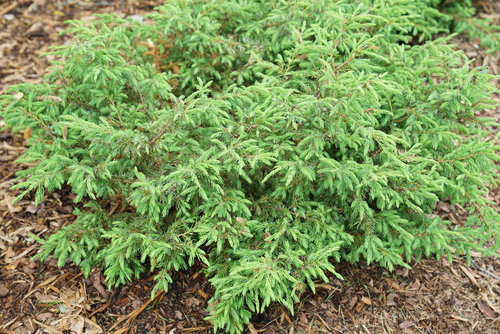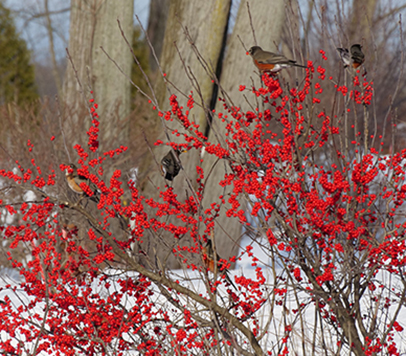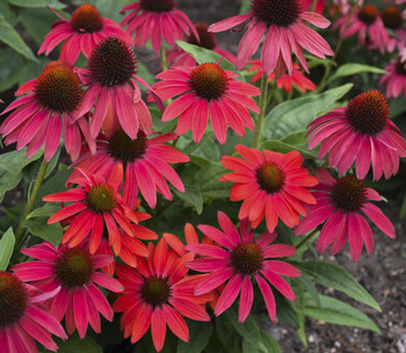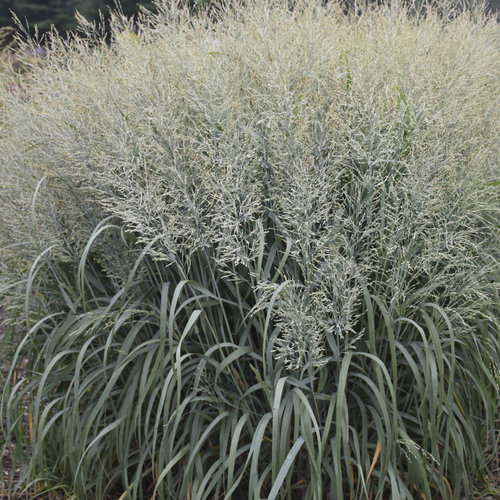Winter Plants for Wildlife
Gardeners play an important role in helping wildlife thrive in suburban and urban settings in the wintertime. Even when they are dormant, our gardens can support all kinds of living creatures. Learn about the different kinds of plants to include in your garden that will help wildlife survive the winter.
When the north wind is howling and snow is coming down, people have the advantage of bundling up or heading indoors for warmth. The creatures that call your garden home have their own ways of surviving the winter, but you can help them along by strategically growing specific types of plants in your landscape. Let’s look at the many different types you might consider.
Conifers and needle evergreens provide some of the best shelter from cold winds, rain and snow for birds, rabbits and deer in the wintertime. The broader they are and the longer their branches, the more room there is to nest, but density also plays a factor in blocking out the weather. Grouping several pyramidal evergreens together provides the best protection for the most creatures. Birds may also gain some nutrition from the seeds found in the cones or fruits produced by some needle evergreens. A few pyramidal evergreens we offer that provide winter shelter include Gin Fizz® juniper, Stonehenge® yew, Cheer Drops® arborvitae, Spring Grove® Western arborvitae, and pyramidal false cypress varieties including Haywire® as well as the Soft Serve® and Pinpoint® collections.
|
Similar to needle evergreens, the density of broadleaf evergreens provides shelter from cold, wind and precipitation. Their wide, thick leaves can reflect the elements even better than some conifers. Many broadleaf evergreens are lower growing and wider than pyramidal evergreens. As such, creatures that prefer to shelter closer to the ground may prefer them. Dandy Man® rhododendrons, Black Hat® PJM-type rhododendrons, Interstella® Pieris, Steady as She Goes® gardenia and the Castle® series of blue hollies are all great shrubs to have in your garden to support wildlife in the winter. |
Small mammals and birds that scavenge seeds off the ground appreciate the low growing foliage of ground-hugging evergreen plants like Montana Moss® and Torguga® junipers, Celtic Pride® Siberian cypress, ‘Miss Piggy’ pigsqueak and evergreen perennial groundcovers. Their branches provide a perch from which to survey their surroundings and the foliage provides cover so potential predators cannot spot the critters from above.
|
Densely Branched Deciduous and Semi-Evergreen Shrubs You might wonder how a plant that loses its leaves could benefit wildlife in the winter. Think about the time when you saw a red cardinal perched on a branch of your lilac or rose of Sharon in the wintertime. Birds enjoy coming out to soak up the sun on sunny winter days. Squirrels use their bare branches to traverse through the landscape above the snowy ground, too. The slender, leafless branches of deciduous shrubs shed snow much easier than evergreens, which leaves plenty of places for critters to perch or climb. From up high, they can survey the area and scout their next place to feed. Shrubs and trees with dense canopies may provide better camouflage and protection than those that have few stems and a more open structure. A few densely branched deciduous or semi-evergreen shrubs that can help out wildlife in your garden in the winter include rose of Sharon (Pink Chiffon® is pictured here), lilacs, ninebark, loropetalum, viburnum and weigela. |
Did you know that some birds can eat as much as three times their body weight in berries every day? The fruit isn’t just nutritious—it is rich in antioxidants which help birds combat inflammation caused by long flights during migration. Berry-producing plants and birds have coevolved over time to work together. The plants feed the birds and in return, the birds disburse the plants’ seeds. This is timed perfectly to meet the birds’ need to bulk up for winter at a time of year when the weather is conducive to establishing seeds. In addition to birds, you may spot a number of other small mammals collecting the berries as they fall to the ground. Once the fruit is ripe, it’s a race to see who can snap it up the quickest, especially at a time of year when food sources are limited. Try planting these shrubs which bear fruit that persists into winter: winterberry holly, blue holly, coralberry, beautyberry, aronia and crabapple trees. |
Just like people are encouraged to balance their diet with fruits, seeds, nuts and grains, wildlife benefits from similar foods. In addition to the berry-producing shrubs described above, be sure to include some plants that produce seeds which persist through fall and into the winter. You’ll find many different species of birds such as cardinals, robins, blue jays, chickadees and grosbeaks seeking out seeds during the fall and winter months. Leave the spent flowers on these plants in the fall so that wildlife can use their seeds for food: Allium, Echinacea, Sedum, Baptisia, Heliopsis and hardy ornamental grasses. |
Ornamental grasses make great low maintenance plants for the landscape, but they provide much more than beauty. When left standing for winter, they also offer numerous benefits for wildlife. Their foliage is used to line the nests or dens of rabbits, chipmunks and opossums, and provides a soft place for deer to bed down. The dense mass of foliage provides camouflage for birds perched on the stems and protection from wind, precipitation and predators for animals that live underneath. Though the grass seeds are tiny, sparrows, finches and other small birds love them. We offer several native Panicum cultivars in our Prairie Winds® collection, all of which would make handsome additions to your winter garden. Since these ornamental grasses typically remain standing through winter, they can be useful to critters all season. |
Learn more about supporting wildlife in your garden:
- Article: Wildlife in the Garden
- Article: Shrubs to Attract Birds
- Pinterest: Gardens for Birds
- Pinterest: Shrubs for Berries
- Video by Garden Answer: Berry Filled Must-Have Plants for a Beautiful Winter Landscape



